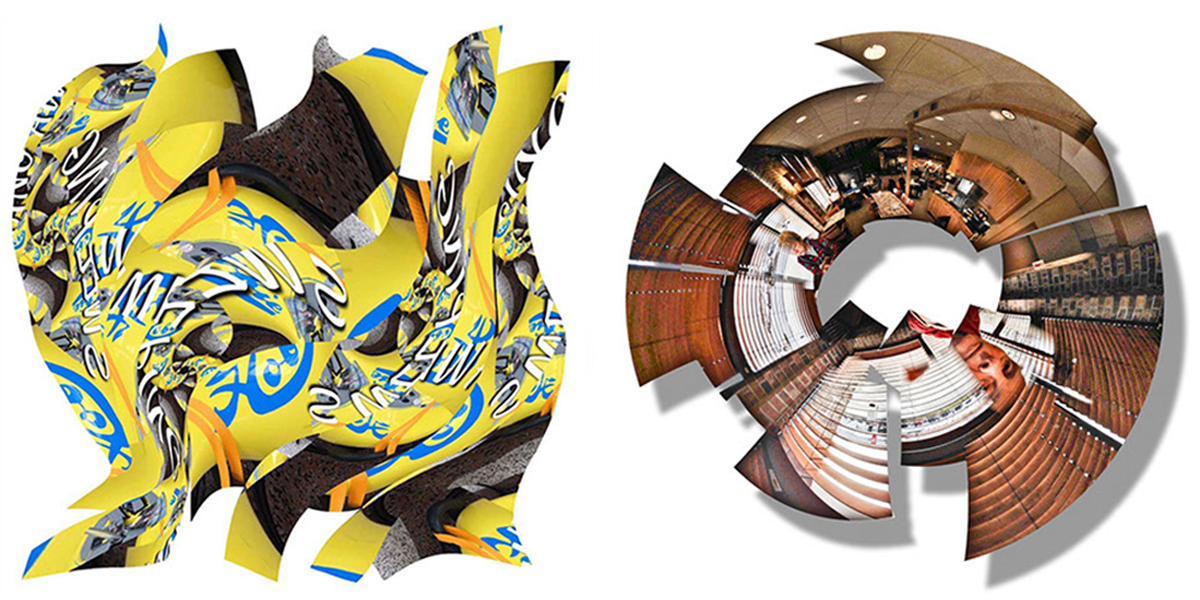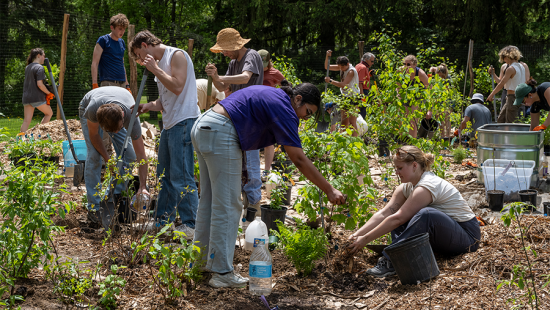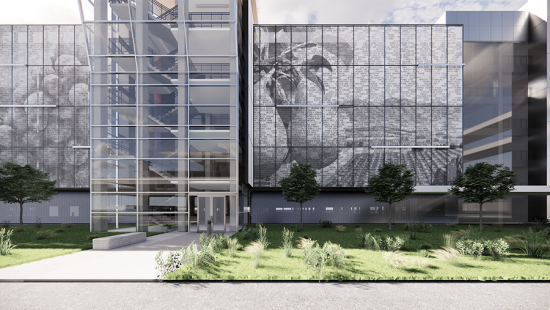Stan Bowman (1934–2021), An Artist on the Leading Creative Edge
Photographer, sculptor, painter, and Professor Emeritus Stan Bowman immersed his teaching and creative practice in the digital revolution, dubbing his explorative body of work Digi-Painting, App-stracts, Floating Shapes, Geo Abstracts, and Sculpted Paintings.
Stan Bowman was born and raised in California and trained as an architect. But his career as a photographer, begun in the late 1950s with a 35mm film camera and black-and-white film, took him through the digital revolution. Bowman died on July 5 in Ithaca, New York, at age 87.

At the University of California–Berkeley, Bowman earned a B.A. in sociology in 1959 and a bachelor of architecture degree in 1964. A master's of fine art in photography from the University of New Mexico–Albuquerque followed in 1973. That same year, he accepted an offer to teach in the Department of Architecture at Cornell. A few years later, he transferred to the Department of Art, where he taught photography and digital imaging for nearly 30 years. He was promoted to full professor in 1987 and served as the department chair from 1980 to 1985. He was the Associate Dean of AAP (1992–96), Interim Dean of AAP (1996–97), and served as Associate Dean for Technology (1997–98). He retired in 1999.
"Professor Bowman's experimentation with spatial representation and digital art helped to shape the direction of photography, printing, and mixed media," said AAP Dean J. Meejin Yoon. "His contributions to the Department of Art, to his students, and to the college were not only enduring but imbued with his spirit of discovery. Our thoughts go out to his family, colleagues, and former students at this sad time."
In 1985, Bowman found himself on the cusp of the digital photography revolution and embraced the new media it presented. A $20,000 Cornell Faculty Innovation in Technology (FIT) grant funded by IBM gave him access to a state-of-the-art computer, software, and IBM color printer — the first of its kind. At about the same time, he was introduced to an image capture video graphics board connected to an external video camera that could produce images and animation with photographic quality.
Although he had been imaging on the computer since the 1980s, it was not until the mid-90s that Bowman found his own way of expression using the new technologies.
"When shifting to a new medium, it is not uncommon for an artist to struggle a while to establish a voice," Bowman wrote. "It is a matter of really beginning to understand the materials and how one can relate them to one's personal life experiences. It is a matter of becoming fluent with the new language, which is necessary for artistic expression."
Professor Emeritus of Art Barry Perlus recalled that Bowman served on the first Faculty Advisory Board for Information Technology (FABIT) in the late 1980s.
"One of Stan's outstanding features as an artist was his love of experimentation," Perlus said. "As digital technology evolved, Stan moved right along with it, finding ways to use new devices and their expanded capacities for artistic ends in both his work and his teaching. His engagement provided a model for me as a new assistant professor and showed me what was possible at Cornell. His trailblazing for the arts and technology helped me and other art faculty to adopt technology in the art studios."
With the arrival of the iPhone in 2012, Bowman began experimenting with iPhone photography, wide format printing, and apps. "My early training in art introduced me to abstract painting that was dominant then and still strong now in the art world," he wrote. "So my inclination has taken me toward the use the iPhone to capture straight photo images and then use some of the newly available apps to take and translate these photo images into often unrecognizable abstract images."
Bowman's artistic work appears in permanent collections at the University of New Mexico Museum of Art, Albuquerque; the San Francisco Museum of Modern Art; La Bibliotheque Nationale de Paris; Erie Art Museum, Pennsylvania; Musées D'Aurillac, France; and the German Photographic Society, Cologne, Germany, among others.
Awards that sustained his exploration and accomplishments included an Award of Excellence from the Society for Contemporary Photography (1986) and artist residencies at Cité International Des Arts, Paris (1987) and Virginia Center for the Creative Arts (1990). His work has appeared in 50 Years: Modern Color Photography, 1936-1986 (Van Soest, 1986), The Village Voice, Innovative Printmaking, Zoom magazine, and Avenue. He has shown in galleries and exhibitions from Ithaca to the U.S. to Europe, including Harris Gallery, New York City; the Chicago Art Institute; and Gallerie Artique, Lyon, among others.
Bowman wrote eloquently about his exploration in the expanding field of digital photography.
"Digital art is just beginning and digital technology will not only transform the way we live, is transforming how we live, but also will transform the way we have done things as artists by providing new techniques and possibilities for making art. And those artists who like to live out on the creative edge of art will be contributing to expanding the parameters of art and defining what it is and does in the future. And until I am gone, that is where I want to be, out on that leading edge."
A memorial service will be held on Saturday, July 31 at 4:00 p.m. at 203 Pine Tree Rd., Ithaca, New York. The family asks that those interested in attending RSVP to offline@lightlink.com. Friends, students, and colleagues are invited to send remembrances of Professor Bowman in advance of the service to offline@lightlink.com.







